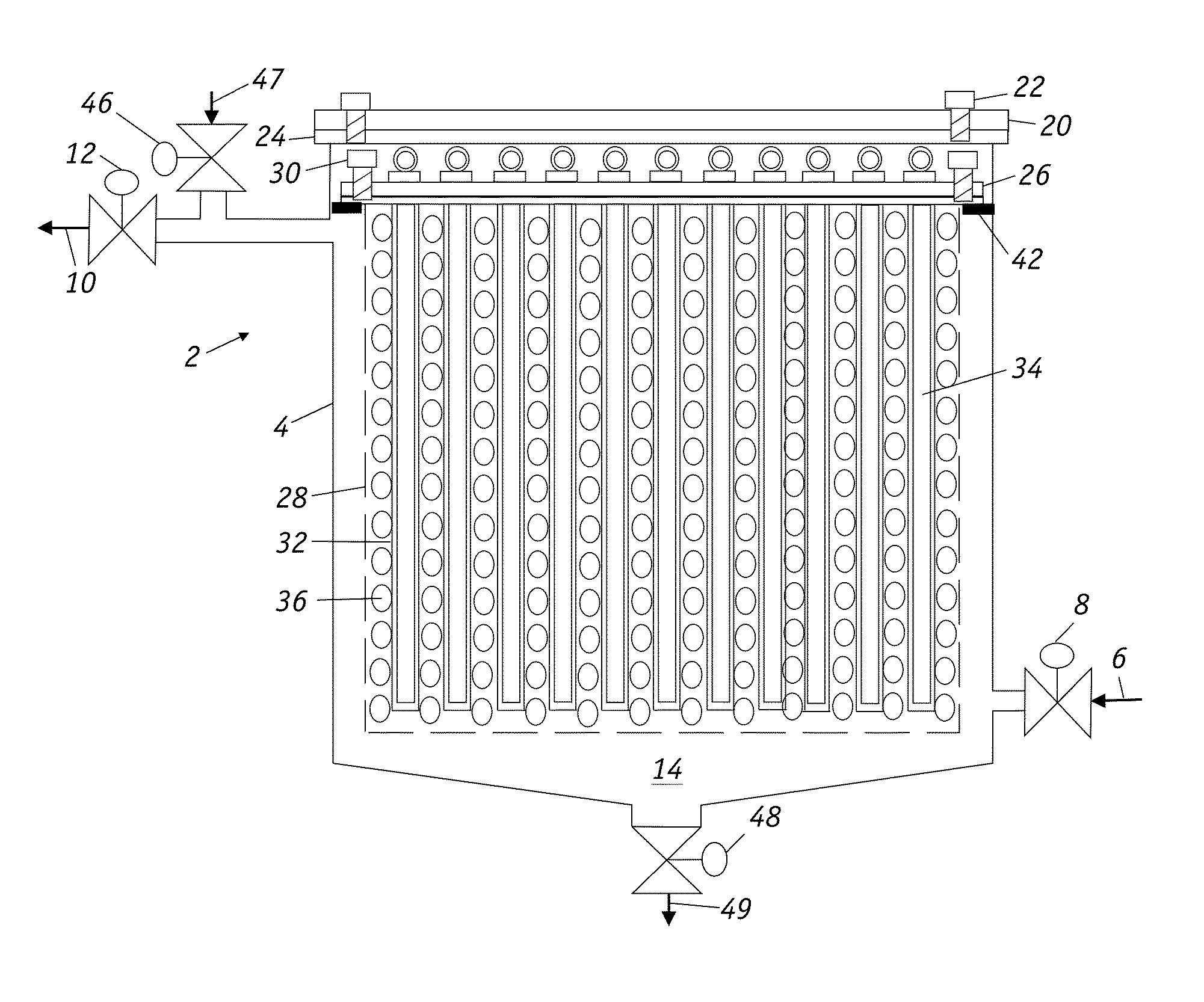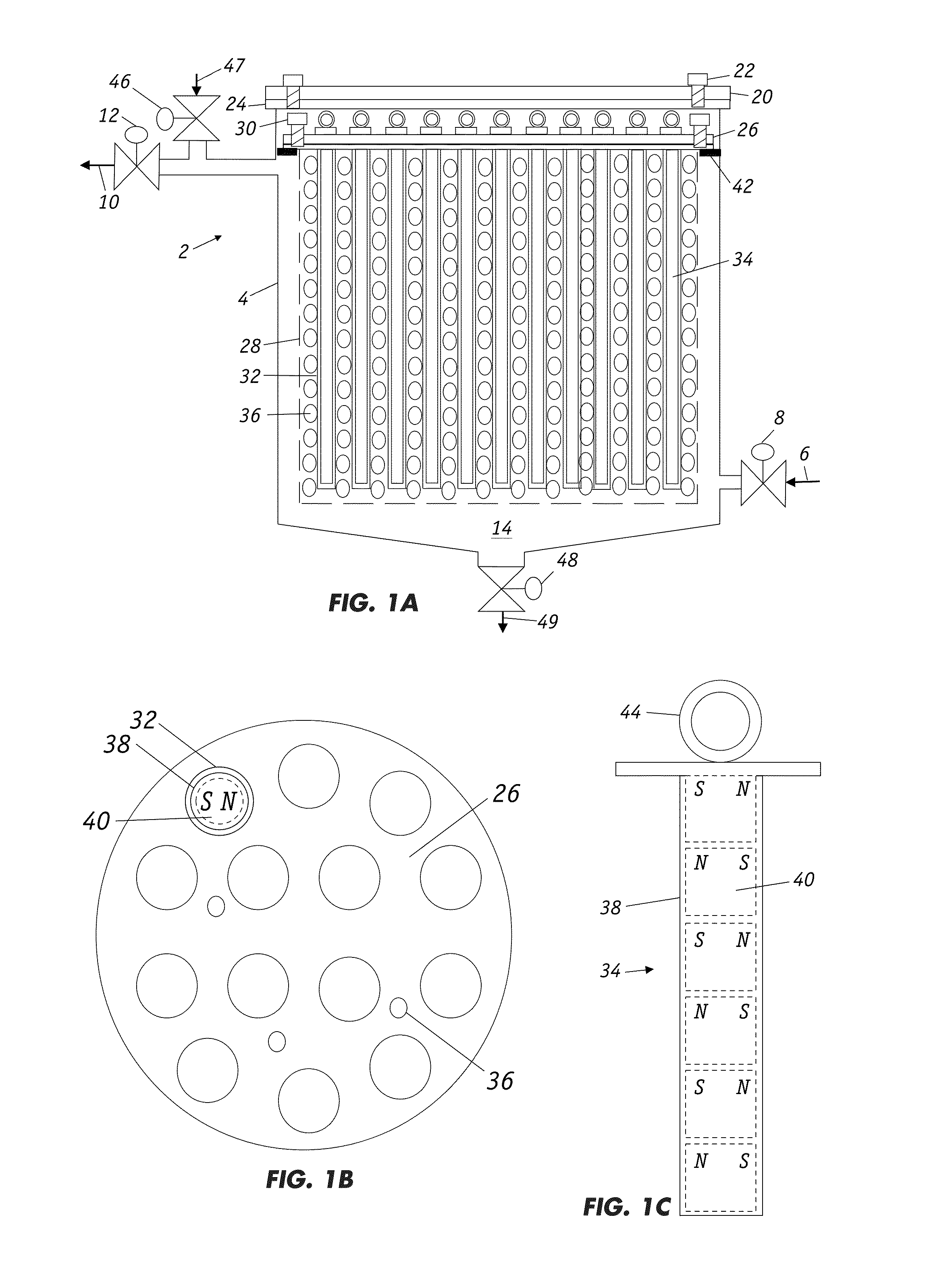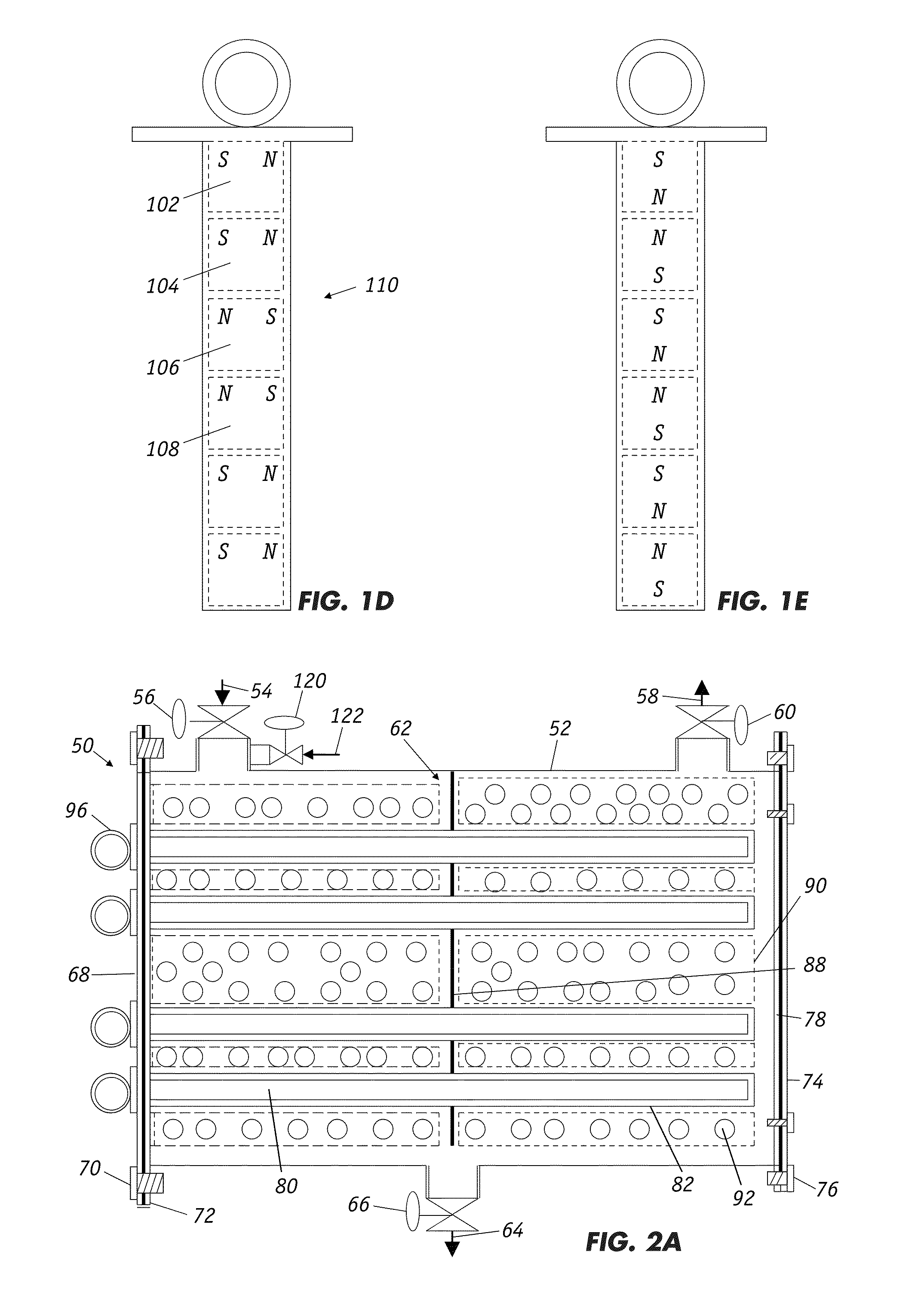Filters for paramagnetic and diamagnetic substances
a filter and diamagnetic material technology, applied in the direction of magnetic separation, separation process, filtration separation, etc., can solve the problems of ineffective small particle technique, inability of magnetic filters to remove diamagnetic substances, and paramagnetic contaminants, so as to reduce the level of diamagnetic materials
- Summary
- Abstract
- Description
- Claims
- Application Information
AI Technical Summary
Benefits of technology
Problems solved by technology
Method used
Image
Examples
example 1
[0051]The degree or strength of magnetism exhibited by selected solid substances with high MS values in a magnetic field was measured. A permanent magnetic bar assembly with a magnetic strength of 6,000 GS was employed. The selected solid powders were: cobalt (Co), iron (Fe), nickel (Ni), nickel oxide (NiO), iron oxides (FeO and Fe2O3), iron sulfate (FeSO4), iron chloride (FeCl3), Ni supported on γ-alumina catalyst (Ni / γAl2O3), dysprosium oxide (Dy2O3), gadolinium oxide (Gd2O3), and chromium oxide (Cr2O3).
[0052]For each test, approximately 0.5 grams of powder were weighed by a precision balance (to 10−4 grams) and placed into a (precision weighed) glass vessel. The permanent magnetic bar assembly was then placed near the powder. After attracting of the power, the magnetic bar was removed and the vessel with residual powders (if any) was weighed. Weight percent (%) of the powders attracted by magnetic bar was calculated.
[0053]As shown in the data set forth in Table 2, metals and thei...
example 2
[0055]This experiment confirmed that diamagnetic substances by themselves are not attracted to a magnetic bar. The diamagnetic substances tested were silicon, silicon carbide (SiC), γ-alumina (γAl2O3), non-magnetic butadiene, titanium oxide (TiO2), ceramic, activated carbon, polyethylene, and elemental sulfur. Magnetic butadiene was also tested. A permanent magnetic bar assembly with a magnetic strength of 6,000 GS was positioned next to powder samples; none of the powders was attracted onto the magnetic bar, except the magnetic butadiene (containing paramagnetic substance). The presence of the magnetic field did not induce magnetism in the diamagnetic materials.
example 3
[0056]Simply coating a permanent magnetic bar assembly with a paramagnetic substance does not render the assembly attractive to diamagnetic materials. In this example, the permanent magnetic bar assembly coated with iron oxide (FeO) powder was positioned each of various diamagnetic powders that included Si, SiC, SiO2. Al2O3, non-magnetic butadiene, magnetic butadiene, TiO2, ceramics, activated carbon, and polyethylene. None of the diamagnetic powders was attracted by permanent magnetic bar assembly, except for the magnetic butadiene which contained a paramagnetic substance.
PUM
| Property | Measurement | Unit |
|---|---|---|
| size | aaaaa | aaaaa |
| distance | aaaaa | aaaaa |
| distance | aaaaa | aaaaa |
Abstract
Description
Claims
Application Information
 Login to View More
Login to View More - R&D
- Intellectual Property
- Life Sciences
- Materials
- Tech Scout
- Unparalleled Data Quality
- Higher Quality Content
- 60% Fewer Hallucinations
Browse by: Latest US Patents, China's latest patents, Technical Efficacy Thesaurus, Application Domain, Technology Topic, Popular Technical Reports.
© 2025 PatSnap. All rights reserved.Legal|Privacy policy|Modern Slavery Act Transparency Statement|Sitemap|About US| Contact US: help@patsnap.com



